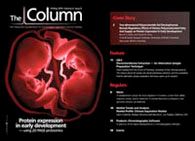Arsenic detection
A method has been developed for detecting arsenic in animal feed, according to a study published in the Journal of Agricultural and Food Chemistry.
A method has been developed for detecting arsenic in animal feed, according to a study published in the Journal of Agricultural and Food Chemistry.1
By using high performance liquid chromatography coupled to an inductively coupled plasma mass spectrometer (HPLC–ICP-MS), the researchers claim to be able to detect two organic arsenic animal feed additives including roxarsone and p-arsanilic acid, as well as other arsenic species such as arsenite, dimethylarsinic acid, monomethylarsonic acid, arsenate and 4-hydroxyphenylarsonic acid. Using a gradient elution procedure, the separation of the seven arsenic species was reported in less than 20 minutes. Liquid chromatography coupled to tandem mass spectrometry was used as an assistant tool to screen arsenobetain in the feed samples. The method is reported to be capable of detecting less than 1.7 μg of arsenic per kg, with a recovery greater than 78.5% for all arsenic species. According to the report the ion-pair reversed-phase HPLC–ICP-MS method was then successfully applied to the speciation of arsenic in feedstuff and formula feed samples.
1. P. Wang et al., J. Agric. Food Chem., on-line 7 April 2010.
This story originally appeared in The Column. Click here to view that issue.

Determining the Effectiveness and Safety of Cinnamon Derivatives for Diabetes Treatment with HPLC
March 27th 2025Cinnamon and its byproducts have been used for many years because of their antidiabetic effect. In a joint study conducted by Gazi University (Ankara, Turkey) and Düzce University (Düzce, Turkey), high performance liquid chromatographic (HPLC) and thin-layer chromatography (TLC) analyses, macroscopic analyses, and enzyme inhibition assays on diabetes-related enzymes were performed on cinnamon samples to determine whether they are safe to use for health purposes.











